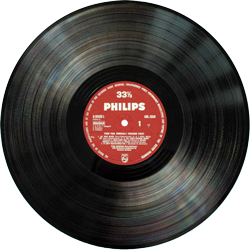I was a relative latecomer to the digital photography world. We got our first digital camera in 2003, a Canon sureshot.
It lasted us a couple years before the desire to go DSLR bit hard. But this isn’t about the camera, but instead about how to manage the deluge of images that come poring in.
Alas, us mere mortals take lots of pictures and have no discipline as to the filing, organization, and culling of the stream. As well the early days of wonderment lead to a burgeoning collection of images that threaten to bury us.
The early days – iPhoto
Being Mac people, my wife and I used the bundled photography app with our Macs, iPhoto. It groks most cameras, it imports, and it “just works”.
In 2003 it had tools to create projects, albums, and grouping of photographs. You could tag photos, and later versions also included facial recognition. You could do some rudimentary processing of images (adjust exposure, remove redeye, fix horizon tilt and some more).
But it’s downfall was that it keeps all images in a big library (hidden in a folder) and managed it with a database. When your collection/library gets close to 20K images, it begins to choke.
Aperture
Not sure when Apple launched Aperture, their pro photo app (2008 or so), in 2009, I took the plunge. It was iPhoto on steroids. Better management, better tools, and some assistance for the “workflow”.
Its plusses:
- Much better handling of a large number of images. I probably got to 75k images without it borking.
- Projects. Your library is easy to put into separate projects that are somewhat self contained (even if they are buried in the main library). Also tools for archiving and restoring projects. Good workflow enhancements.
- Much better tools for image optimization. Color balance, adding presets, customizing presets. All sorts of cool things. Also it allowed easy export and import with Photoshop or some other external photo editing tool.
- Great tracking of versions and masters. When you edit something it creates a copy. You can undo things easily.
- The lightbox mode. Create lightboxes within projects to again instill a workflow to get to the best and most useful images.
- It can handle a lot more images without choking. Libraries that would bring iPhoto to its knees are manageable. Additionally, there are plenty of tools for having multiple libraries, and to save them to different drives.
But it isn’t all cookies and unicorns. There are some shortcomings.
Its minuses:
- The default storage is as a monolithic library. Yes, it can work with a plain directory structure, but it really guides you into a monolitic library structure.
- If you acquire bad habits with iPhoto, it will let you continue them. This is a lot bigger of a deal than it sounds, as at some point you need discipline, and this tool will not force that discipline.
- It is just a Mac tool. If you are multi platform, then you can’t have a single workflow across all your systems.
But, in the balance, it is a huge step in the right direction to a good photography workflow.
Google Picasa – not really a contender
During the time that I was a Mac Aperture user, I started doing more with my work PC, so I grabbed a copy of Picasa.
Picasa has been around a while, and was acquired by Google some time ago. It is an OK photo tool. It has some image manipulation tools, and it can handle most raw format files. But it isn’t really a workflow tool.
Yes, you can create albums, and it will search your computer and index ALL your images. But its organizational schemes aren’t very robust. It is, like many Google products, more of an aggregator service. It will find all (and I mean ALL) of your images and mash them together. It will let you email them (and conveniently scale them to be reasonable), and if you are one of the 3 power users of Google Plus, it will make managing your online images a snap.
But it falls very far short of a workflow management tool. I am pretty sure that Google is fine with this. They target the casual user, and Picasa fits that need. But even with my limited needs on my work PC, it quickly fell on its face.
Adobe Photoshop Lightroom
Lightroom has been in the Adobe portfoliofor some time. As a partner to the iconic Photoshop, Lightroom has some great features.
- Native directory organization. Everything is in a human navigable directory structure. No monolithic libraries. If you handle and move files from within LR, it will never lose track of them. This also makes it easy to backup, and to archive.
- Support for the Adobe Digital Negative format. dneg files are a standard raw data format. Not a big deal if you only shoot one brand of camera, but if you have several, it does simplify the organization, and long term storage of files. Of course, this isn’t a mandate. If you prefer to keep it in the RAW format, you are free to.
- Extensive, and customizable importation. If you are a pro, you can streamling the importing with your IPTC tags, copyright terms, and others. For us mere mortals, it allows us to save common terms.
- Multiple vehicles for grading, sorting and ranking images. COmparable to Aperture, but the interface is a bit cleaner for setting flags, tags, and priorities. Little things make a difference, and LR has clearly put a lot of thought into the process
- Huge variety of image processing options. In fact, much of what I would jump over to Photoshop for can be done right in LR. Aperture has much of this, but LR has more, and more extensible options. You can also choose to process each image you import with one of the processing options (but I will admit this isn’t too useful to me).
I have just started using Lightroom, and I like it. There is, like with many pro quality applications, a learning curve. Fortunately, there are some really high quality training and videos available from Adobe.
Final thoughts:
Of course, making the transition is a bit of a pain. I have to extract files from my Aperture library, and then reimport them. But this gives me time to plan my organization a little better, so I don’t have to go through my entire library. I can also deep storage archive some(many) of my pictures that aren’t needed to be at hand.
I have a CSS license for Photoshop and Lightroom, so I can (legally) have it on both my work computer, as well as my home Mac.
Check back as I relate my experiences further.
(Oh, today I shoot with two main cameras, a Canon 5D and a Canon sureshot G12, both take wicked awesome pictures.)
 The UI was meh. The process to set it up and program the correct wheel circumference was a bitch. But it kept decent time (I think I reset the clock only a couple of times in the 12 years it was on the bike).
The UI was meh. The process to set it up and program the correct wheel circumference was a bitch. But it kept decent time (I think I reset the clock only a couple of times in the 12 years it was on the bike).


